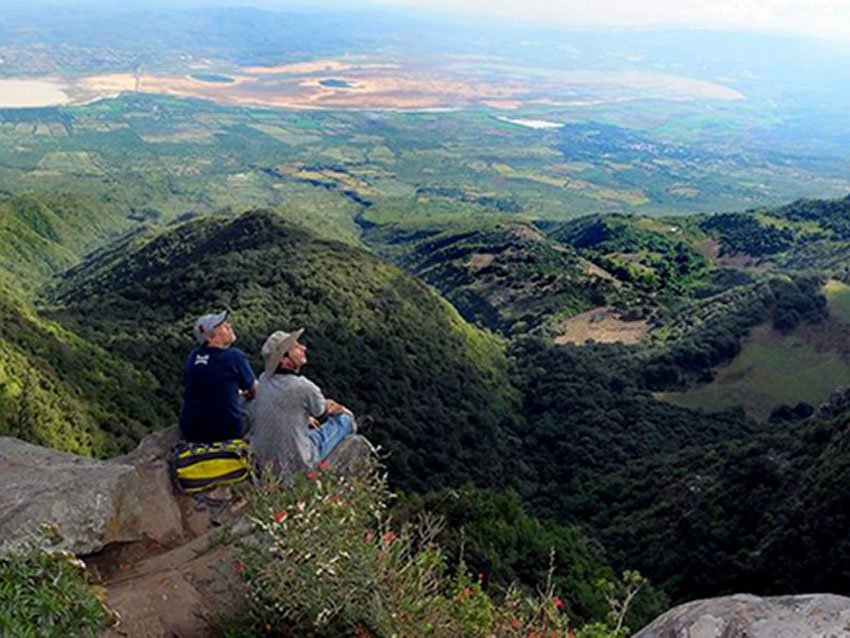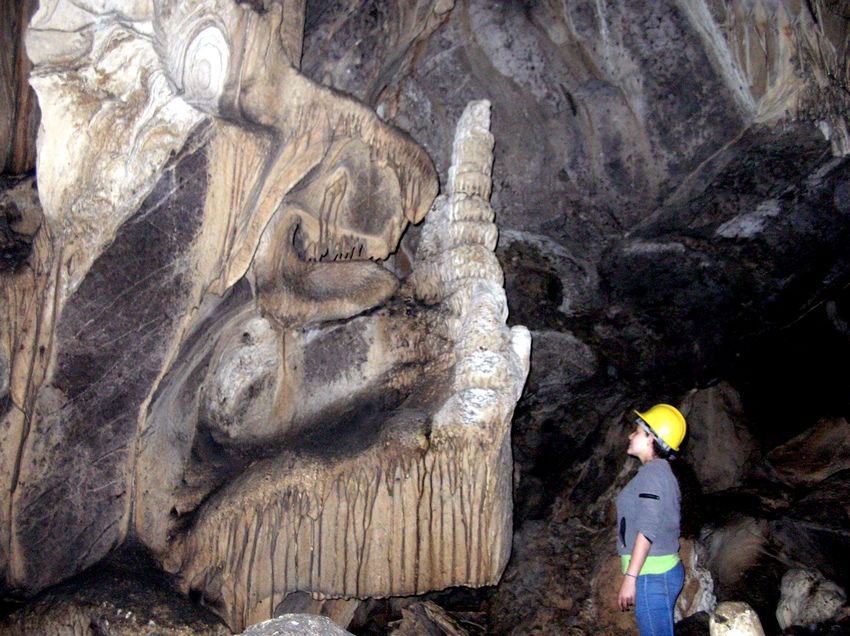The mountain town of Tapalpa is a favorite weekend destination for the population of Guadalajara during the months of April and May. After strolling the picturesque cobblestone streets of this Pueblo Mágico, tourists might visit Las Piedrotas — the Great Big Rocks — just outside of town, or even hike to the spectacular 102-meter-high Salto del Nogal (Walnut Cascade).
There are, of course, many other sites to see and things to do in the surrounding Sierrra de Tapalpa. I began to discover some of them years ago when I heard rumors there was a hermit living in these hills, a man who had quit his job at the Autonomous University of Guadalajara in order to dedicate himself full time to self-knowledge and the appreciation of nature.
Finding the solitary cabin of Alfredo Leal was no easy task but we were rewarded with an opportunity to assist at a sort of “seminar under the pines” with the hermit and visitors who had joined him that day discussing — of all things — the nature of time.
The day after that, we heard about an impressive divisadero or lookout point offering a magnificent view of the great salt flats of Sayula a thousand meters straight down.
Today this spot is known as the Cruz del Hermitaño, the Cross of the Hermit, in honor of Alfredo Leal, who passed away in 2017, hopefully after gaining insights into what makes this universe tick.

The Hermit’s Cross Lookout is easy to reach from Highway 437, the scenic route through the Sierra Tapalpa. This road passes through the mountain town of Atemajac de Brizuela and takes you west to the pueblito of Juanacatlán which, by the way, means “the place of onions” in Nahuatl.
If you park near the plaza of Juanacatlán you can take a delightful hike through the nearby hills to visit La Piedra Balanceada, Balanced Rock. This picturesque trail is simply gorgeous during the rainy season when you will see no end of wildflowers and strange, beautiful mushrooms while you hike beneath the tall, straight pine trees.
The hike starts at the northeast end of the plaza on Calle Pascual Morones. The trail is 4.7 kilometers long, with a vertical difference of 336 meters and the walk may take two hours (one way) with lots of stops for snapping pictures. This turned out to be one of the most beautiful paths I’ve been on in the Tapalpa area, which is noted for its great outdoor beauty.
The trees were incredibly tall here and we passed a bubbling brook whose waters looked so clean that one of my friends drank from the stream, suffering no ill effects. This trail, by the way, is listed on Wikiloc.
When you stand atop the Balanced Rock, you are at 2,817 meters above sea level (nearly two miles), just about as high as you can get in the Sierra Tapalpa. While this rock is rather ordinary looking, it is big, easy to climb, and it does wiggle a little if enough people get on top of it and run back and forth.
The monolith, by the way, is close to a dirt road, so a friend who didn’t go on the hike could drive around and pick you up there. If you do that, you will pass by a huge slate quarry at the edge of town. I believe this would be a fascinating place to visit on a weekday when you could watch workers removing huge, thin sheets of smooth slate several meters across.

Curiously, I learned that Mexican schools never used slate for blackboards. “Our pizarrones were made of painted wood instead of pizarra (slate), although there’s plenty of slate around this area and it’s dirt cheap,” my friend Jorge Monroy told me.
If it is late in the day and you need a place to stay before continuing on your way to Tapalpa, check out Cabañas Tapalpa, Sierra del Tecuán. The entrance is on the highway, just north of Juanacatlán. Here you’ll find a delightful little lake surrounded by delightful little cabins.
This is also the home of a truly curious place previously known as Amor Corazón Restaurant.
Everything you see here at Cabañas Tapalpa — including the lake — was created and designed by a lawyer named Carlos Sánchez. Most interesting of all, in my opinion, are his artistic creations inside Amor Corazón: psychedelic art which incorporates bottles, sometimes lit up by sunlight from outside, very much in the style of Antonio Gaudí of Barcelona.
When I asked Sánchez to comment on what it all means (to him), he said:
“Well, although I am a lawyer by profession, I’ve always liked painting and art, and I should mention that all the artwork around you, even the colors themselves, are symbolic. Now the main theme is love, a force that radiates, that buds and springs forth. So there are many symbols of the male and female forces here, for example, the bas-relief snake climbing this column has two heads, representing these forces, a motif you see all around you.”

Indeed, we could see a male jaguar and a female panther at the near end of a long mural running the length of the restaurant, as well as a pair of giant lizards gamboling above us. Carlos went on to explain the meaning of the two fairy-like thrones we could see. One is shaped like a mushroom with a flower decorating its stem.
“The flower is love,” says Carlos,” and its roots are anchored in the earth. But along its length are false roots floating in the air and these show how human beings can be deceived by illusion and lose their way. And the other throne is called the Kundalini of Human Health, representing man’s soul and the path to spiritual well-being.”
If the bizarre, beautiful and mystic art makes your head spin, you can come back to earth by hiking along a wide, smooth trail which circumnavigates the 60 hectares of Cabañas Tapalpa property and, of course, at night you can enjoy the perennial attraction of these hills: sipping locally made ponche in front of a roaring fireplace with occasional excursions outside the cabin to check out the constellations sparkling in the cold mountain air.
Amor Corazón no longer operates as a restaurant, but you can wander about inside the building even if you are just passing by.
Fortunately, you are now only 20 kilometers away from an operating restaurant — and a very fine one, I might add — called La Ceja, which is located right on the edge of another impressive lookout which is also a paraglider takeoff point.
La Ceja means The Eyebrow which is exactly what a paraglider looks like when seen from a distance. So here is a place where you can enjoy a delicious ham-and-mango pizza while watching people leaping over the edge of a precipice and blissfully hovering in the air.
[soliloquy id="77729"]
Checking out their website will give you an idea how beautiful this place is and they actually have an English version. Here you could rent an “ecological cabin” or book a paraglider flight for total beginners, in which you fly together with an expert.
Finally, I should mention that the first thing you see when you arrive at this place is a big sign at the gate saying, “Gringos are welcome!”
The writer has lived near Guadalajara, Jalisco, for more than 30 years and is the author of A Guide to West Mexico’s Guachimontones and Surrounding Area and co-author of Outdoors in Western Mexico. More of his writing can be found on his website.
